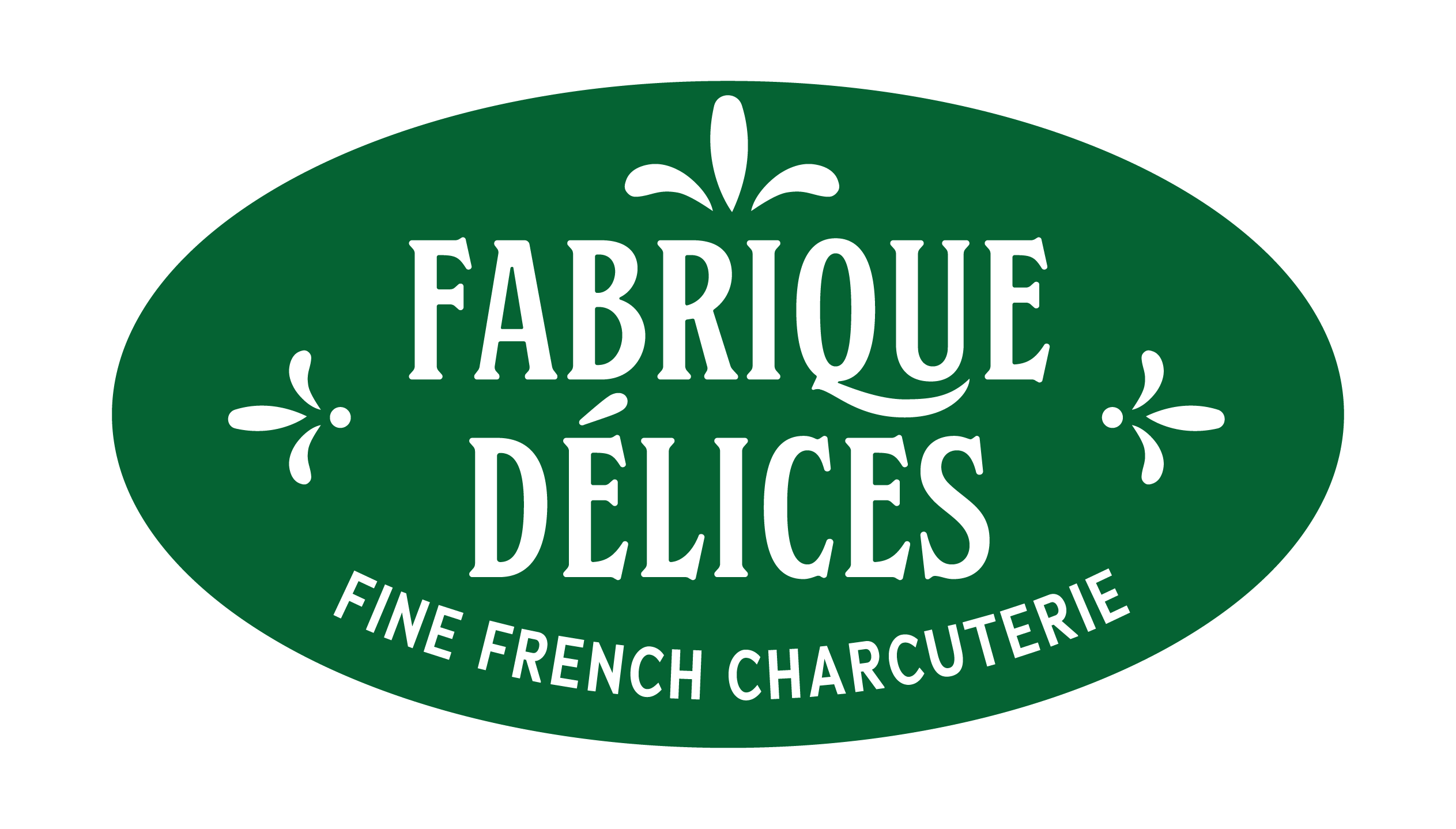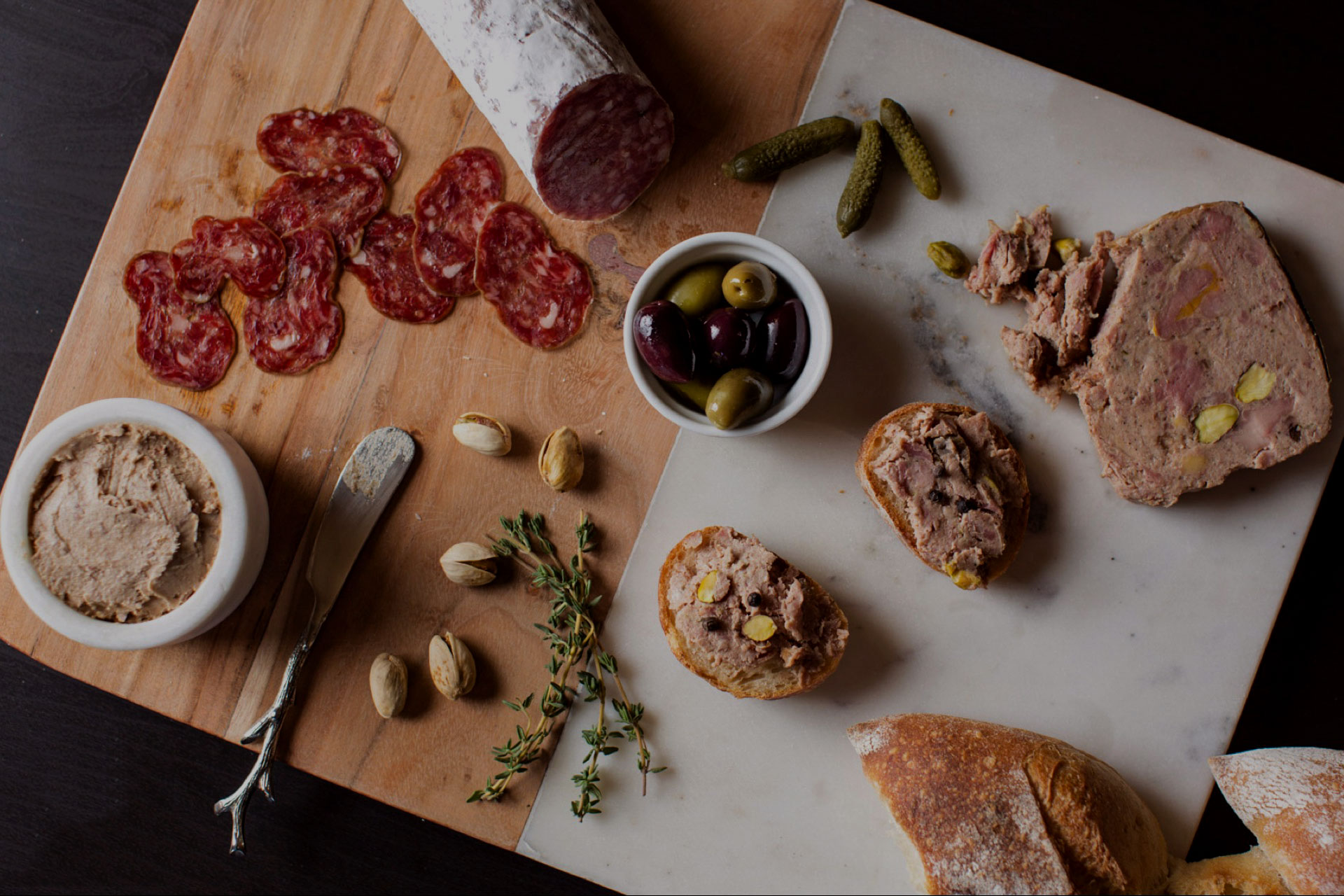What is Charcuterie?
Charcuterie is a delicatessen specializing in prepared meat products. It includes a vast range of preparations such as salting, cooking, smoking and drying. These culinary specialties are mainly made from pork; as well as lamb, duck, goose, rabbit, wild boar, pheasant or venison.
What is the history of Pate?
It takes hours to prepare a high quality pâté. The convenience of having pâté in the refrigerator, ensuring a quick and tasty meal, impromptu entertaining, a spur-of-the-moment picnic, or a late-night supper, all without having to turn on the stove, is what makes pâtés “fast food”.
Pâtés started out as a rustic peasant dish that was generally disdained by the upper crust of society, and didn’t really come into common use or appear in cookbooks late in the 19th century. The idea of pâté came up as a very popular way of preserving the meat before the invention of refrigeration. The meat was well preserved by mixing ground meat, spices, and in most cases, brandy (or other alcohol) and then slowly cooking the whole concoction in a terrine.
The result is portable, versatile, quick to serve, highly nutritious and best of all, delicious!
Nowadays, pâtés can be made with beef, pork, lamb, duck, goose, pheasant, or just about any meat of fowl source you can think of, as well as fish, seafood and vegetables. When combined with a salad, crusty bread and a glass of wine, pâtés become fast, easy and highly satisfying meals.
Differences between pate, mousse & rillettes?
PATE pronounced [pah-TAY]
Country style pâtés have a coarse texture, with chunks of meats. Although care is taken with the overall appearance, this type is intended to look rustic.
MOUSSE pronounced [Moos]
Mousses are generaly made of livers from goose, duck or chicken, mixed with wine or spirits, spices and sometimes truffles. This type of mousse is very refined, and elegant. Its creamy texture makes it easy to spread on baguette, toasts or crackers. Great care is taken in the presentation of the mousses, which are generally layered with aspic.
RILLETTES pronounced [Ri-Yet]
Rillettes de canard are a traditional French delicacy made from slow-cooked duck meat, shredded with its own rich fat for a smooth yet slightly textured consistency. Unlike pâtés or mousses, rillettes have a heartier, more rustic appeal. Their deep, savory flavor pairs beautifully with crusty baguette, toasts, or crackers. Often enjoyed as part of a charcuterie board, rillettes de canard offer a perfect balance of indulgence and tradition, making them a staple of French gastronomy.
What is the shelf-life of unopened pâtés?
See Best-by date on product. Keep pâtés refrigerated at 40F.
What is the shelf-life of pâtés after opening?
Up to 7 days refrigerated and wrapped in plastic film.
Do we have PORK FREE charcuterie?
Yes, We have a great selection of pork free products such as the truffle mousse, duck mousse, rillettes du Périgord, goose mousse, peppercorn mousse, salmon mousse, vegetable pâté, foie gras, magret, duck leg confit, duck gizzards, duck fat, smoked duck breast, duck prosciutto, bresaola, lamb merguez, chicken merguez.
What is the difference between pate and foie gras?
Foie gras is renowned for its buttery rich taste.
It has often been a subject of controversy as it’s made with livers coming from force-fed geese or ducks.
Pâtés and Mousses are made with regular livers. Animals haven’t been force-fed.
What is the aspic?
Aspic is made of gelatin and can be eaten. It helps unmold product from terrine and protects it from the light.
How to unmold a terrine?
Unstick pâté from mold by pulling out on the 2 sides of the terrine.
Flip the mold upside down and press the top down while keeping pulling out on the sides
How and when to eat pâté?
Pâtés, rillettes or mousses are ready to enjoy (and fully cooked): simply spread on bread or crackers!
Pâté is not a seasonal products. It can be enjoyed in many ways:
Combined with a salad (e.g. duck breast, gizzards, bresaola…)
As an appetizer: make amazing cheese and charcuterie boards.
For a picnic: slice some saucisson or spread pâté in a sandwich.
As a fancy snack!
How to make a Charcuterie and Cheese Board?
Thinly slice some saucisson, cured meat (such as coppa or bresaola), unmold your favorite pâté and/or mousse.
Spoon rillettes into a small bowl. Place all the charcuterie on a wood cutting board or a large plate.
You can also add some cornichons. And don’t forget the bread. Bon Appétit !
How to enjoy charcuterie?
Check our blog for recipes ideas!






